#Spotted | California | 1930s
Text
Environment: Death Cap Mushrooms are Extremely Deadly—and They’re Spreading
The Invasive Death Cap Mushroom is thriving in North America. While it can be difficult to distinguish from an edible one, make no mistake: It can do a number on you.
— By Emily Martin | August 31, 2023
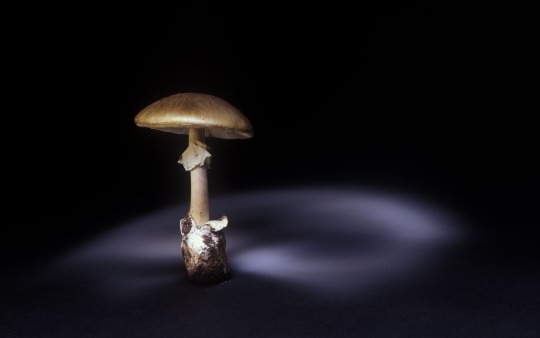
The Death Cap is the World's Deadliest Fungus, responsible for 90 percent of the World's Mushroom-related Poisonings every year. Native to Europe, Death Caps have spread around the World over the past Century. Photograph By Yves Lanceau/Nature Picture Library
The name itself is both alarming and self-explanatory: the death cap mushroom.
Scientifically known as Amanita phalloides, death caps are responsible for 90 percent of the mushroom-related fatalities that occur every year, making them the world’s most lethal mushroom. The infamous fungus was recently in the news after three people in Australia died after ingesting what investigators suspect were death caps.
The mushroom originates from the U.K. and parts of Ireland, but over the past century, it has hijacked trips around the world, spreading to Australia and North America.
Since arriving on the West Coast, the invasive mushroom has spread rapidly throughout California and has even appeared as far north as British Columbia, but much about its arrival remains a mystery. Why the mushroom spread so quickly, when exactly it arrived, and how it will impact the environment it grows in are the topics of ongoing research.
Here’s what you need to know about this deadly mushroom—and how to spot one—in case it emerges in a forest near you.
How The Mushroom Earned Its Name
The unassuming mushroom can grow up to six inches tall with a similarly sized domed cap, sometimes tinged yellow or green. Under its cap are white gills and an off-white stem—characteristics that make it difficult to distinguish from an edible mushroom.
Yet unlike an edible mushroom, it can cause extreme damage to the liver and kidneys, or in some cases, death.
That’s because the mushrooms contain a unique set of toxins, says U.S. Department of Agriculture plant pathologist Milton Drott. Though it is safe to the touch, a death cap contains amatoxins, which prevent cells from creating proteins, ultimately causing cell death and organ failure.
Drott notes that these toxins may have allowed the populations spreading through the U.S. to thrive, serving up a defense against any new predators the fungus encounters in its environment.
But studying the death cap mushroom can be difficult. It’s challenging to replicate ideal environmental conditions for a mushroom in a lab, and studying plucked mushrooms requires complex DNA sequencing.
Some fungi can damage the environment, like the fungus that wiped out American Chestnut trees, but so far, there’s no strong evidence that death caps are a threat to their new environments. In fact, trees and other plants benefit from their presence.
Death caps are a mycorrhizal fungi, which means they form a relationship with plants that’s mutually beneficial for both plant and fungus. The plant receives nutrients from the soil that the fungus extracts, while the fungus receives sugars from the plant.
A Mysterious Move Around The World
It’s nearly impossible to pinpoint the actual moment the deadly mushroom made its way to the western U.S. and why exactly it’s continued to spread since then, says Anne Pringle, a mycologist at the University of Wisconsin-Madison and a leading expert on death caps.
The earliest record of the mushroom in California is from the 1930s. Some researchers theorize that death caps immigrated in the soil of a cork tree transported from Europe to California to make corks for a then burgeoning wine industry. Others say the mushroom may have hitched a ride on a mystery plant imported to beautify college campuses.
Regardless, both Pringle and Drott say the only thing they’re certain of is that the fungus was likely dormant—and thus hidden from human eyes—in an imported plant’s soil.
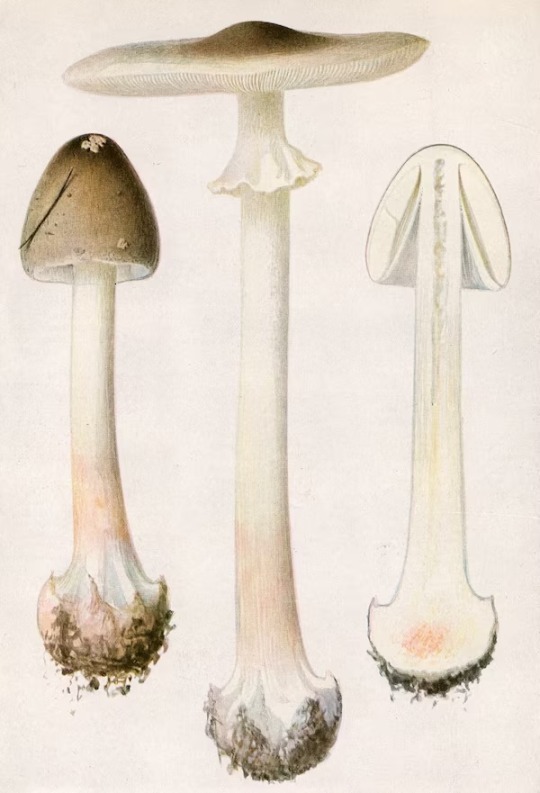
Scientifically known as Amanita Phalliodes—Death Caps were first spotted in California in the 1930s. Some scientists think they were imported in the soil of cork trees, used to make corks for California's wine makers.
“When they planted that tree in the ground, they also effectively planted the fungus. So, what exactly is the smoking gun, who did it, and when—that's the thing I think we'll never truly know,” Pringle says.
Pringle can’t say for sure what makes the state such a friendly habitat for the invasive species, but she does note that the fungus can tolerate different environments throughout Europe, growing as far north as Sweden and as far south as southern France.
Since arriving, Pringle says its geographic extent has grown larger and spread to other States; most recently it appeared in Idaho.
Retracing Their Steps
When scientists first spotted death caps in the U.S., they thought they may be native to the region because of how widespread they are.
In 2009, Pringle was the first to label the population in California as invasive, a discovery she made by inspecting the mushrooms’ DNA.
“When they planted that tree in the ground, they also effectively planted the fungus. So what exactly is the smoking gun, who did it and when, that's the thing I think we'll never truly know.”
— Anne Pringle
And when scientists did realize the death cap had newly spread into the U.S., there wasn’t any preexisting data to provide clues about where exactly it entered North America and how quickly it multiplied.
“There's so many ideas to test, it’s hard to even know where to get started,” Pringle says.
Research on invasive fungi in the environment is quite new, Pringle says, so answers to questions of why death caps are spreading and its impact on local ecosystems may still be years away.
Drott thinks the mushroom may be proliferating because it thrives in its new soil and with its adoptive plants, or there may be a lack of predators in these new habitats to keep death cap populations in check.
His research has revealed at least one clue: the genes responsible for producing toxins in American death caps are extremely unique, distinct from their genetic cousins in Europe, and may be the key to understanding how the invasive plant has thrived in North America.
Earlier this year, scientists published preliminary research suggesting the death cap can reproduce both with and without a mate, and that a single fungus can live a long, reproductive life.
Encountering A Death Cap
Spotting a death cap requires vigilance.
“It’s scary that these [pass for] delicious mushrooms,” Drott says.
He adds that, in addition to an unalarming physical appearance, the death caps’ toxins don’t smell or provide any other obvious giveaways. Its toxins are also extremely stable when heated and don’t break down when cooked, unlike other edible fungi that are only dangerous to eat raw.
That’s why scientists suggest erring on the side of caution and steering clear of foraging mushrooms. Pringle also emphasizes the importance of learning the plants in your local environment.
“If you can tell the difference between Swiss chard and spinach, you can learn difference between edible and poisonous mushrooms,” Pringle says, emphasizing the small but recognizable differences between the two greens. “People want a magic rule, but there’s nothing I can hand you in a sentence or paragraph."
Rather, she says identifying physical differences between death caps and a safe mushroom can become easier with exposure.
Spreading Awareness
Many death caps have been found in National Parks, including Point Reyes National Seashore in California, where Pringle assisted with a study on the invasion in 2010.
National Park Service (NPS) science advisor Ben Becker notes that parks are constantly seeing new invasive species with the frequent movement of people and equipment, and the death cap is a good example of how humans can transport tiny fungal invaders around the world.
Becker says NPS works with local mushroom science groups like the Bay Area Mycological Society to spread public awareness about the dangers of foraging mushrooms.
If you’re concerned about something you have eaten, go to the emergency room and if possible, take pieces of the mushroom you ate for identification.
And as many foragers and scientists say, don’t munch on a hunch.
#Environment#Mashroom | Amanita Phalliodes—Death Caps#Spotted | California | 1930s#Imported | Soil | Cork Trees 🌲#Extremely Deadly#Invasive#North America 🇺🇸#Difficult | Distinguish#Emily Martin | National Geographic#Native | Europe 🇪🇺#Deaths | Australia 🇦🇺#UK 🇬🇧 | Ireland 🇮🇪#West Coast | California | US 🇺🇸#British Columbia#U.S. Department of Agriculture | Plant 🌱 Pathologist | Milton Drott#Toxins#Thrive#Complex DNA Sequencing#Fungus | Wiped Out | American Chestnut 🌰 Trees 🌲#Anne Pringle | Mycologist | University of Wisconsin-Madison#Sweden 🇸🇪 | France 🇫🇷#Idaho#Vigilance#Swiss Chard | Spinach#Dangerous | Eat Raw#National Parks | Point Reyes National Seashore in California#National Park Service (NPS)#Science Advisor | Ben Becker#Bay Area Mycological Society
0 notes
Text
Buster’s Best Loved Stunts

Steamboat Bill Jr. 1928
Two tons of house front falls on top of Buster in what is surely his most famous stunt, if not the most famous stunt of all time. His salvation comes in the form of a small upstairs window, wider than his shoulders by only a couple of inches.
Were he to fail to stand exactly where the nails that had been driven into the ground to mark the spot, were he to move forward even slightly, he would be killed instantly.
Co-director Chuck Reisner couldn’t bear to witness the scene. “My father, who was a very religious man, a Christian Scientist, had a practitioner up there,” his son, Dean, remembered, “and they were praying all day because here comes this stunt and my father couldn’t bear to see it. He and the practitioner were off praying in one corner and waiting to find out whether Buster came through it or not.
“Two extra women on the sidelines fainted,” Keaton said in 1930, relishing the memory, “and the cameramen turned their backs as they ground out the film.” The thrilling shot came off beautifully. “But it’s a one-take scene and we got it that way. You don’t do those things twice.” He would later claim that the house scene was one of his "greatest thrills," before noting, "I was mad at the time, or I would never have done the thing."

Cops 1922
Although by his own admission Buster only ever had one day of schooling, he must have learned a little about physics along the way.
I don’t know how else he was able to convince himself that he could perform this iconic stunt Cops without ripping his arm out of its socket.
No special affects were used here, and no camera trickery either. Just incredible timing, incredible strength and somehow managing to factor his height and weight with the speed of the car and deciding to risk it.

The Navigator 1924
This scene was originally intended to be filmed in a swimming pool, but Buster wanted deeper water, so after destroying an indoor pool in Riversdale California by over-filling it with water and cracking the bottom, he decided to film in Lake Tahoe where the water was deep, very clear but very cold. Buster could only stay underwater for a few minutes at a time.
As always Buster insisted on doing it himself despite the dangers and even had a special divers helmet made with a clear front screen so that the audience could see his face and know he wasn’t cheating them.

The General 1926
In what filmmaker James Blue would call “a moment of almost almost pathetic beauty,” Buster sits dejectedly on the coupling rod that connects the great metal wheels of the General and remains there, frozen in place, as the engine begins to move towards the tunnel. For this stunt Buster only had to sit very still, but as with the Steamboat Bill stunt, it also required nerves of steel.
“I was running the engine myself all through the picture. I could handle that thing so well I was stopping it on a dime. But when it came to the shot, I asked the engineer whether we could do it. He said “there’s only one danger. A fraction too much steam and the wheel spins, and if it spins it will kill you then and there”. We tried it four or five times and in the end the engineer was satisfied that he could handle it. So we went ahead and did it”

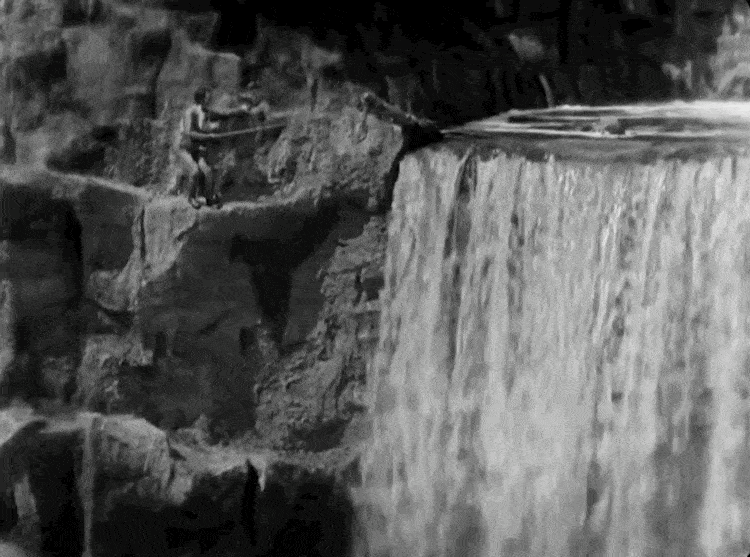
Our Hospitality 1923
Two stunts could have resulted in Buster’s death in Our Hospitality.
The film climaxes in a daring rescue of the heroine Virginia, whose boat is being swept downstream through the rapids. As usual, Buster had refused to use a double. As a safety precaution, wire was attached to his body and to make sure he would stay within camera range.
When the cameras started to roll, he plunged into the fierce current of the Truckee River and began to swim. A few seconds later, the wire snapped and he shot forward, tumbling over rocks and boulders, swallowing great mouthfuls of foam as he was borne toward the rapids. It took all his strength to maneuver himself to the river's edge so that he could grab an overhanging branch.
The cameraman did as was always ordered to by Buster and kept filming. When he was found ten minutes later, Buster lay in the underbrush along the riverbank facedown in the mud, his feet still dangling in the water. He did not move when they pulled him out. His first words as he lifted his head were: "Did Nate see it” Nate was Natalie Talmadge his wife and co star. She had seen it.
The footage of the accident was used in the final film.
Back in Hollywood, he completed the rescue sequence on the lot. A waterfall was constructed over the swimming pool. To create the distant valley below the falls, a miniature set was planted with hundreds of tiny trees. As Virginia's boat plunges over the falls, Willie uses a rope to swing out over the waterfall and grab her at the last moment. Although a dummy was substituted for Natalie, Buster performed the dangerous stunt himself. Hanging upside down underneath the waterfall, he swallowed so much water that a doctor was called to give him first aid.
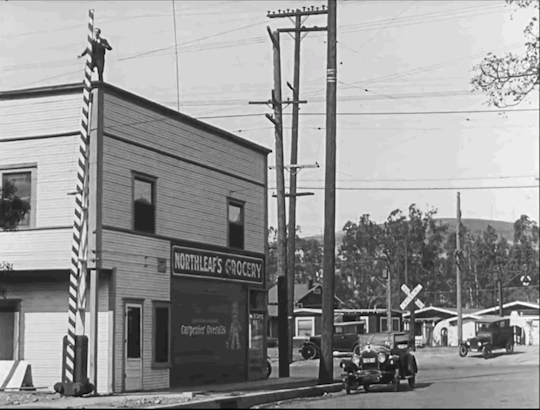
Sherlock Jr. 1924
The film critic David Thomson described Keaton's style of comedy thusly: "Buster plainly is a man inclined towards a belief in nothing but mathematics and absurdity ... like a number that has always been searching for the right equation”
Many of Buster’s stunts comprised of a perfect combination of “mathematics and absurdity” including this stunt from Sherlock Jr. which involved his holding onto an upright roadblock gate that swings down, with him jumping onto an oncoming car at the right moment. It has an almost James Bond like quality of humour and coolness about it.

Seven Chances 1925
Buster did not want to do Seven Chances. He was not happy with the script but was compelled to make it as the studio had already bought it.
At the first test screening he was disappointed by how disengaged the audience were. The only time they seemed to perk up was towards the end of the movie. He is being chased by the pack of brides and runs down the side of a hill to get away when some boulders start falling behind him. He manages to dodge them just in time.
Buster took note of this reaction and just went with it. He had papier-mâché boulders made in various sizes and created a whole new scene carrying on from that point. It is one of the most memorable moments in the whole movie.
Although the boulders were fake, due to the size of some of them if they’d hit him they would no doubt have caused some damage. Buster had to be super fast and super nimble to avoid getting hit. Fortunately he was both.
I sometimes wonder if this scene influenced the famous boulder scene in Raiders of the Lost Ark.

Sherlock Jr. 1924
"Of course all my weight pulls on the rope, and I pull the spout down and it drenches me with water. I didn't know how strong that water pressure was. Well, it just tore my grip loose as if I had no grip at all and dropped me the minute it hit me. And I lit on my back with my head right across the rail right on my neck. It was a pretty hard fall, and that water pushed me down....I had a headache for a few hours.... I said, 'I want a drink.' I turned at the next block coming back from location-it was out there in the [San Fernando] Valley someplace. I went in to see Mildred Harris, Charlie Chaplin's first wife, and I went into her house and she gave me a couple of stiff drinks. During Prohibition, see, when you couldn't just stop anyplace to get a drink. So, that numbed me enough that I woke up the following morning, my head was clear and I never stopped working”.
-Buster Keaton
Reader, he’d broken his neck.

Three Ages 1923
“So, my scene was that with the cops chasing me, I took advantage of the lid of a skylight and laid it over the edge of the roof to use as a springboard. I backed up, hit it, and tried to make it to the other side, which was probably about eighteen feet. Well, I misjudged the spring of that board and didn’t make it. I hit flat up against the other set and fell to the net, but I hit hard enough that I jammed my knees a little bit, and hips and elbows and I had to go home and stay in bed for about three days. And, of course, at the same time, me and the scenario department were a little sick because we can’t make that leap. That throws the whole chase sequence, that routine, right out the window. So the boys the next day went into the projecting room and saw the scene anyhow, ’cause they had it printed to look at it. Well, they got a thrill out of it, so they came back and told me about it. I say ‘Well, if it looks that good let’s see if we can pick it up this way: The best thing to do is to put an awning on a window, just a little small awning, just enough to break my fall.’ ’Cause on the screen you could see that I fell about sixteen feet. I must have passed two stories. So now you go in and drop into something just to slow me up, to break my fall, and I can swing from that onto a rainspout, and when I get a hold of it, it breaks and lets me sway out away from the building hanging onto it. And for a finish, it collapses enough that it hinges and throws me down through a window a couple of floors below. Well, when this pipe broke and threw me through the window, we went in there and built the sleeping quarters of the fire department with a sliding pole in the background. Well, it ended up…It was the biggest laughing sequence in the picture…because I missed it in the original trick.”
#buster keaton#silent movies#comedy#1920s#silent film#silent comedy#1920s cinema#golden age of hollywood#hollywood#slapstick#stunts#stuntman#stunt master#sherlock jr#cops#cops 1922#the navigator#Sherlock Jr.#silent era#silent movie stars#three ages#seven chances#our hospitality#natalie talmadge
244 notes
·
View notes
Note
tell me abt the salton sea 👀 I've actually been there and it smells RANCID but idk much abt it
the thing about the salton sea is that it is just such an insane case study on climate change in so many different ways. it was created in 1905 by the flooding of an irrigation canal meant to bring water from the colorado river to the imperial valley in california for farming. it was a disaster, but it was still met with shrugs because they assumed it would evaporate because it flowed into such a hot and flat area. EXCEPT, the runoff of farm water fed it and refilled it as the water evaporated
there's a couple background factors here
it's located in the salton basin of the salton trough. this is one of the lowest points in the continent, and the salton sea is the lowest lake in the continent at a whopping elevation of -236ft or -71.9m. this shit is EXTREMELY below the sea level. if there's any excess water in the area, it just flows downhill to the salton basin
the colorado river used to run through this region. key word is used, because it would alternate where it flowed over the course of thousands of years. the course diverted around 1580, and the lake (lake cahuilla) dried up
because of this, the imperial valley had a lot of good farming soil but not enough water. this is why the canal was built
additionally, because this was the first half of the 20th century, water conservation wasn't really taken into concern. farmers used a lot of excess water, which continually fed the lake. this water carried fertilizer and pesticides, which leeched into the lake bed and pulled the ancient salt deposits up to the surface
but who cares about all of that! it's the 1950s, the war and great depression are over, and there's a bigass lake in the middle of an extremely dry area. fish had been introduced to the lake in the 1930s, so it's a great spot for inland saltwater fishing. the area gets developed and turned into a beach resort. there's yacht clubs and hotels, which the beach boys, frank sinatra, and bing crosby regularly stay at. there's even lots developed for people to purchase and build homes on, as well as schools built in the area. it's thriving and looking like it won't just be a tourist destination, but an area with robust communities that live there year round
this would be all good and fine, if it weren't an isolated lake fed by farm water runoff with no outlets for water to flow as it's being replenished. in the 70s, scientists start pointing out that this is a ticking time bomb as concerns over water conservation and climate change gain more attention. even in the 60s it was known that there were problems waiting to happen, but it was fixable! and very expensive, so of course nothing had been done
the late 70s is when things start to fall apart. as the lake becomes increasingly saline, it becomes less hospitable to the wildlife that once thrived there. fish begin dying en mass, which is part of why it smells so awful there. you've got nasty fertilizer and pesticide salt water, plus so many dead fish. on top of that, tropical storms raised the water level of the salton sea past it's banks and flooded the surrounding communities. and that was before hurricane kathleen put bombay beach, one of the communities, completely underwater
in the 90s, algal blooms that killed off the fish became regular occurrences. there was also a botulism outbreak, which meant migratory birds that passed over the lake would stop for water and food, and then contract botulism and die. so now you have not only so many dead fish, but a ridiculous amount of dead birds. incinerators had to be run 24/7 for WEEKS to burn all the birds
as time goes on, the salton sea is evaporating rapidly, becoming so saline that it's now saltier than ocean water. the evaporation also exposes the lake bed, which has absorbed the fertilizer and pesticide from the agricultural runoff and become toxic. since the area is so dry, winds often blow this toxic dust toward the coachella valley. the area has higher rates of asthma, most likely because of this
if you've been there, you've probably seen at least some of it, but local artists turned the area into a public art installation. the mix of these art installations and abandoned buildings makes the area look alien and surreal. bombay beach is definitely the most notorious of these, considering the salt encrusted abandoned buildings. there's also several other notable places nearby, like salvation mountain and slab city. salvation mountain is a bigass "mountain" that was originally built by one man, who felt called out by god to build it*. quite frankly, it is sick as FUCK. that said, there are concerns about the toxicity of the paints used :( slab city, on the other hand, is an off the grid squatter commune. the temperatures get so high in the summer, that most of the people who stay there just come for the winter months. there's a lot of unique art installations here, too
overall. the salton sea is an absolute ecological disaster of disregard for the environment, human greed, and negligence. but there's something so compelling about the communities nearby, their histories and the way that some people have managed to cling on. it's an older documentary, but plagues and pleasures on the salton sea is free on youtube and gives a really good look into what the communities were like at the time. miracle in the desert is also a really good one that covers the history of the salton sea and the modern community efforts to save the environment there. both are free on youtube and i highly recommend them!
tl;dr: salton sea crazy and so so fascinating and i feel so incomprehensibly insane about it. maybe because i got into all of that right after turning 23 and was like wow...just like mitski i guess i must retire there
#.txt#ask#I LOVE U SALTON SEA. U ARE SO WEIRD AND FUCKED UP AND ALIEN-LY BEAUTIFUL. AND AWFUL FOR EVERYBODY
10 notes
·
View notes
Text
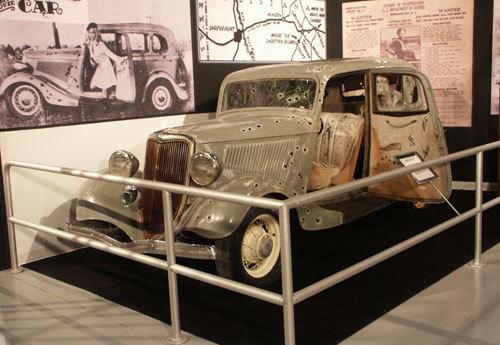

The Ghosts of Bonnie and Clyde
Bonnie Parker and Clyde Barrow were two of American’s most famous gangsters during the Great Depression. The two met originally in 1930 in Dallas, Texas.
They both came from desperate poverty and both had an utter contempt for authority. Bonnie, 19 fell madly in love with the 21 year old Clyde.
Shortly after their first meeting Clyde was sent to jail for burglary. Bonnie managed to smuggle a gun to him and aided his escape. But Clyde was recaptured and served a 12-month sentence.
Once out he hooked up with Bonnie again in 1932, swearing never to go back to prison. Bonnie knowing Clyde would probably end up dead vowed to die with him.
The couple spent the next 21 months on the road, with others who became known as the Barrow’s Gang. They quickly moved from petty thievery into bank robberies, kidnapping and murder. It is stated that Bonnie didn’t shoot anyone but that she would reload Clyde’s guns.
Their crime spree spanned the rural parts of Texas, Oklahoma, New Mexico and Missouri. The “yellow press” at the time romanticized the pairs’ exploits–to many Depression era Americans they became a badly needed form of entertainment.
But the reality was Bonnie and Clyde carried out ruthless bank and store robbers where sometimes they kidnapped or wounded their victims.
Clyde and various gang members murdered 13 people, two of which were police officers. The pair actually didn’t live up to their glamorized image, but they did leave a blood bath in their wake.
They managed to elude the police for almost two years but as their crimes became more violent law enforcement doubled and then tripled their efforts. The police did not take kindly to cop killers.
In the end one of their own gang members betrayed them. In May of 1934 the couple were driving a back wooded road near their hideout at Bienville Parish, Louisiana when police officers from Texas and Louisiana set up a roadblock near Gibsland, Louisiana. These five officers ambushed the stolen car Bonnie and Clyde were in and within minutes the car was riddled with over 100 bullets.
Bonnie got her wish, her body was found dead slumped over Clyde. The two bodies were towed from the site still in the car.
Before this was done however, onlookers managed to snip hair and other souvenirs from the bodies. One man even tried to cut off Clyde’s ear and trigger finger but the officers managed to stop him. Since their deaths many people claim their ghosts still remain.
The most active of these hauntings is at the site in the wooded area near where they were shot and killed in Louisiana. Today a weather worn marker is placed at the spot were Bonnie and Clyde’s car rolled off the road.
Many visitors to this spot have reported strange anomalies and mists showing up in their photographs. Most state that these strange lights appeared in just one of the many photos they took.
The car itself is also considered haunted by their ghosts. For 30 years this blood splattered, bullet-ridden V8 Ford “Death Car” as it is known, was a popular attraction at carnivals, amusement parks, flea markets and state fairs. It is estimated that it made it various owners millions of dollars.
Today the car is displayed in a room along with Clyde Barrow’s bloodstained, bullet holed shirt at Whiskey Pete’s Casino in Primm, Nevada just across the border from California.
Several people who have viewed the Ford over the years state they got a creepy unnatural feeling as they stood near it. Yet again, many people who have taken photographs of this car have picked up strange anomalies in their pictures.
One hotel that Bonnie and Clyde stayed at for several nights during their crime spree was the Baker Hotel in Mineral Wells, Texas. It is stated they haunt two specific areas of the hotel, the Brazos Room and the Ballroom.
Some feel their ghosts are still present because they are reliving fond memories. Others say that it is several objects the hotel owns that keep their ghosts active. For the hotel once had Bonnie’s 38 revolver on display as well as photographs of her and Clyde. The hotel also once displayed a poem that Bonnie wrote for Clyde.
Some state that a video of a ghostly woman wearing a long old-fashioned gown walking from one pillar to the next in the hotel lobby resembles Bonnie. Unfortunately this video has been made “private” recently.
#The Ghosts of Bonnie and Clyde#outlaws#ghost and hauntings#paranormal#ghost and spirits#haunted locations#haunted salem#myhauntedsalem
16 notes
·
View notes
Text
Events 4.2
1513 – Having spotted land on March 27, Spanish explorer Juan Ponce de León comes ashore on what is now the U.S. state of Florida, landing somewhere between the modern city of St. Augustine and the mouth of the St. Johns River.
1755 – Commodore William James captures the Maratha fortress of Suvarnadurg on the west coast of India.
1792 – The Coinage Act is passed by Congress, establishing the United States Mint.
1800 – Ludwig van Beethoven leads the premiere of his First Symphony in Vienna.
1801 – French Revolutionary Wars: In the Battle of Copenhagen a British Royal Navy squadron defeats a hastily assembled, smaller, mostly-volunteer Dano-Norwegian Navy at high cost, forcing Denmark out of the Second League of Armed Neutrality.
1863 – American Civil War: The largest in a series of Southern bread riots occurs in Richmond, Virginia.
1865 – American Civil War: Defeat at the Third Battle of Petersburg forces the Army of Northern Virginia and the Confederate government to abandon Richmond, Virginia.
1885 – Canadian Cree warriors attack the village of Frog Lake, killing nine.
1902 – Dmitry Sipyagin, Minister of Interior of the Russian Empire, is assassinated in the Mariinsky Palace, Saint Petersburg.
1902 – "Electric Theatre", the first full-time movie theater in the United States, opens in Los Angeles.
1911 – The Australian Bureau of Statistics conducts the country's first national census.
1912 – The ill-fated RMS Titanic begins sea trials.
1917 – American entry into World War I: President Wilson asks the U.S. Congress for a declaration of war on Germany.
1921 – The Autonomous Government of Khorasan, a military government encompassing the modern state of Iran, is established.
1930 – After the mysterious death of Empress Zewditu, Haile Selassie is proclaimed emperor of Ethiopia.
1954 – A 19-month-old infant is swept up in the ocean tides at Hermosa Beach, California. Local photographer John L. Gaunt photographs the incident; 1955 Pulitzer winner "Tragedy by the Sea".
1956 – As the World Turns and The Edge of Night premiere on CBS. The two soaps become the first daytime dramas to debut in the 30-minute format.
1964 – The Soviet Union launches Zond 1.
1972 ��� Actor Charlie Chaplin returns to the United States for the first time since being labeled a communist during the Red Scare in the early 1950s.
1973 – Launch of the LexisNexis computerized legal research service.
1975 – Vietnam War: Thousands of civilian refugees flee from Quảng Ngãi Province in front of advancing North Vietnamese troops.
1976 – Prince Norodom Sihanouk resigns as leader of Cambodia and is placed under house arrest.
1979 – A Soviet bio-warfare laboratory at Sverdlovsk accidentally releases airborne anthrax spores, killing 66 plus an unknown amount of livestock.
1980 – United States President Jimmy Carter signs the Crude Oil Windfall Profits Tax Act.
1982 – Falklands War: Argentina invades the Falkland Islands.
1986 – Alabama governor George Wallace, a former segregationist, best known for the "Stand in the Schoolhouse Door", announces that he will not seek a fifth four-year term and will retire from public life upon the end of his term in January 1987.
1989 – Soviet leader Mikhail Gorbachev arrives in Havana, Cuba, to meet with Fidel Castro in an attempt to mend strained relations.
1991 – Rita Johnston becomes the first female Premier of a Canadian province when she succeeds William Vander Zalm (who had resigned) as Premier of British Columbia.
1992 – In New York, Mafia boss John Gotti is convicted of murder and racketeering and is later sentenced to life in prison.
1992 – Forty-two civilians are massacred in the town of Bijeljina in Bosnia and Herzegovina.
2002 – Israeli forces surround the Church of the Nativity in Bethlehem, into which armed Palestinians had retreated.
2004 – Islamist terrorists involved in the 11 March 2004 Madrid attacks attempt to bomb the Spanish high-speed train AVE near Madrid; the attack is thwarted.
2006 – Over 60 tornadoes break out in the United States; Tennessee is hardest hit with 29 people killed.
2012 – A mass shooting at Oikos University in California leaves seven people dead and three injured.
2014 – A spree shooting occurs at the Fort Hood army base in Texas, with four dead, including the gunman, and 16 others injured.
2015 – Gunmen attack Garissa University College in Kenya, killing at least 148 people and wounding 79 others.
2015 – Four men steal items worth up to £200 million from an underground safe deposit facility in London's Hatton Garden area in what has been called the "largest burglary in English legal history."
2020 – COVID-19 pandemic: The total number of confirmed cases reach one million.
2021 – At least 49 people are killed in a train derailment in Taiwan after a truck accidentally rolls onto the track.
2021 – A Capitol Police officer is killed and another injured when an attacker rams his car into a barricade outside the United States Capitol.
2 notes
·
View notes
Text
Blood and Blue Diamonds: Chapter 14 Notes
So there’s a story that when Howard Hawks was filming The Big Sleep in the ‘40s, the filmmakers sent a telegram to Raymond Chandler because they couldn’t figure out who’d killed a particular character in his original book. Chandler thought about it and was like “damn, sorry, totally no clue,” and everybody just moved on. I think about this story whenever I ask myself why Jayce has yeast in his apartment.
If you put that aside, buchty are a delicious Czech dessert and this recipe seemed to work pretty well for making them. They’re like rolls that come with the topping baked in.
A few miscellaneous notes: Pershing Square was a well-known LA cruising spot, and Ramona was a wildly-popular-for-decades 1884 novel about a pair of star-crossed lovers in Southern California. It was intended as a well-meaning Uncle Tom’s Cabin-style book drawing attention to the plight of indigenous Californians, but the ultimate effect was that people became obsessed with, as we might say today, the aesthetic — there was a huge Ramona tourism complex and persistent claims about a real “historical Ramona,” and it helped fuel the faux-Spanish Mission Revival boom that gave us, as mentioned in a previous chapter, things like Jayce’s apartment building.
Arcane fanon usually codes Jayce as straightforwardly Hispanic/Latino in non-Runeterra AUs, which seems entirely fair. But it kept bothering me that my 1930s Mexican American protagonist had a word-of-Riot-god Greek given name and a more ambiguous but conspicuously non-traditionally-Hispanic surname. I plead my case on the fact that Mexican immigrant women marrying outside the Chicano community was, as far as my research indicates, pretty common in the early 1900s.
9 notes
·
View notes
Text
Lemuria, Mount Shasta and Extraterrestrial Communication

The lost continent of Lemuria is said to be somewhere near the Indian and Pacific oceans.
However, some ancient alien theorists believe that Lemuria was not a continent at all, but rather a giant mothership in the Indian Ocean, and that the mothership simply abandoned Earth after the Great Flood.

Due to the sheer size of the mother ship, ancient people might have thought it was a large island or continent, although another theory is that Lemuria sank into the ocean due to the pole shift, but there is no sign of this.
At the very beginning, one can correctly formulate the question, what does this have to do with Mount Shasta in California? So, according to legend, the last Lemurians migrated to the underground caves of Mount Shasta, and later many people reported seeing mystical creatures in strange clothes coming out of the caves.
They are said to be tall, have an organ or device on their forehead that looks like a third eye, and have pale skin. In 1962, Roger Hemmings and a group of campers said they saw three cloaked men come out of the cave and down the mountain, hovering two feet off the ground. All three creatures had a third eye on their forehead.
Travelers also claim that the sounds of mechanisms are heard in the caves, sometimes human groans, and sometimes screams.

The explanation for this, according to one theory, may be that there is an underground UFO base inside Mount Shasta. Because, according to reports, unidentified flying objects enter and exit this mystical mountain, and other theorists also support this line of thought, saying that Mount Shasta, like many other volcanoes, contains the energy needed to charge UFOs.
Delving into the mysteries, an interesting story is that JC Brown, a British explorer hired by the mining company Lord Cowdray in England, claims to have entered the cave and found many different things, shields, gold and mummies.
JC Brown disappeared after he announced it and was never seen again. An unidentified source also claimed to have seen Bigfoot walking around the crashed UFO at the same time they witnessed the UFO sighting near Mount Shasta.
Bigfoot seems to have a strong connection to UFOs, which is why theorists think Bigfoot might be an alien experiment and that they might be living in nearby caves. There are many caves on Mount Shasta that could be the perfect hideout for such a bigfoot community.
There were 3 witnesses of bigfoot on Mt. Shasta. Beakfoot was sitting in a tall tree when three campers spotted the creature. The creature jumped off and frightened the vacationers so much that they, having thrown all their belongings, rushed to their car.
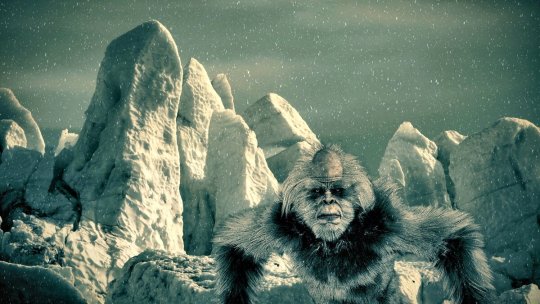
With all the paranormal activity seen on this mountain, it's no surprise that it attracts "weird people" from druids to Wicca ritual groups. In the 1960s, for example, thousands of hippies flocked to this sacred mountain to connect with cosmic beings and merge with nature.
Many New Age groups also considered the mountain to be a holy place. Beneath the mountain was said to be an ancient city called Telos, where people from the ancient lost continent of Lemuria (also known as Mu) settled after Lemuria was destroyed. It is said that they still live under the mountain.
This story lives on to this day, and they claim that these beings are sometimes physical people, and sometimes live on another plane of existence, perhaps as beings of other dimensions. However, the story of Telos actually comes from the fictional novel The Inhabitant of Two Planets, written in the 1800s by author Oliver Frederick Spencer.
Decades later, in the 1930s, a secret society known as the Rosicrucians also popularized the belief that advanced Lemurians lived under Mount Shasta. One such Rosicrucian was Paul Dale Roberts.
When his group was doing research on Mount Shasta, one of his psychics told him to take a picture of her, she felt something nearby. When he looked at the photo, he saw a silver UFO disk tilted in the sky behind it.
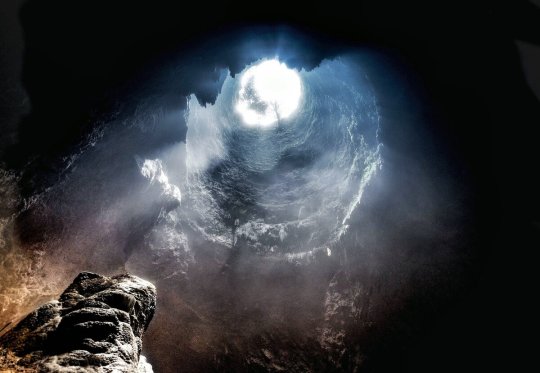
There are also common stories that the lenticular clouds on Mount Shasta are sometimes natural, but sometimes the mothership of a UFO is covered in cloud vapor and looks like a lenticular cloud. Charlotte Stanton, for example, claims to have observed a lenticular cloud on Mount Shasta and, after observing it for some time, saw the outline of a large silver ship in the clouds.
In any case, it is absolutely certain that there are too many inexplicable things and mysteries on and around Mount Shasta, so there must be something out of this world.
Read the full article
4 notes
·
View notes
Text
On the Hunt for the Skyline Trail
This is the second part of a story written by Ian McCluskey of Oregon Public Broadcasting (OPB)
The trailblazer
Bob and Eva come to a stand of towering cedars and hemlocks. Sunlight filters into the understory in narrow rays. Here the trees have been growing slowly, adding rings each year that one could count all the way back to before the United States was a country. Bob and Eva’s bootsteps are cushioned by the layer of soft forest duff, which has long covered over any track of the old Skyline trail.
Bob pauses and looks around. “Is that one?” he asks, peering a few trees ahead. He’s looking for any indication of an old wound on a tree trunk, where the bark has grown over in a scar.
As he approaches, he sees what he’d hoped for: not just a scar, but three in a row. These were cuts made a century ago by a forest ranger’s hatchet. The marks are called a “blaze.” And the person who did it, a “trailblazer.”
“I’ve always loved the lingering effect of the past,” Bob said. “The things that are so indelible that they don’t go away.”
Bob pauses to imagine the scene. The sunlight, the trees, and everything would have been essentially identical to the year the blaze was cut, 1920. That year a young forest ranger, Fred Cleater, stood in the exact same spot, and marked the blaze on both sides of the tree, before continuing southward with his pack horse, leaving a dotted line of blazes that would become the first path of the Skyline.
For millennia, a system of trails used by Indigenous people braided through the forest. Some were adopted by early fur traders. Some by ranchers to graze sheep in the hundreds of natural meadows. Turn-of-the-century logging operations cut spur roads to extract the giant old growth. From the tracks of past users, Cleater pieced together a 260-mile route from Mount Hood to Crater lake.
The U.S. Forest Service described the Skyline’s original route as “made up of a combination of many pieces of rough trails, often with but a frail tread, usually devious in direction, the whole tied together in a quite intangible manner, and quite apparently a choice by course of least resistance.”

Before the Pacific Crest Trail, the Oregon Skyline ran down the spine of the Cascades, from the Columbia River to the California border.
Courtesy of the U.S. Forest Service
Ghosts of the Great Depression
Cleater’s plans included shelters every 10 miles, which were eventually built in the 1930s as Depression-era public works projects. By 1936, the Oregon Skyline Trail had been extended to reach across the state, from the Columbia Gorge Ranger Station near the town of Cascade Locks south to Soda Mountain, just a few miles from the California border.
The Skyline was a modern trail with amenities. Remote outpost ranger stations could offer hay for horses or some chance for resupply. A line of early telephone cable was laid to connect a string of telephones along the route so hikers could call if they ran into trouble.
“Although improvements along the trail will modernize the convenience to make it a comfortable excursion for even the most city wise,” the Forest Service wrote in 1934, “it must be left in its rugged state where possible to satisfy those travelers searching for the primitive.”
During the 1920s and ‘30s, the Skyline had a heyday. Bob wants to find this moment again. “It was kind of a renaissance era of humans interacting with wilderness in a way that was very different,” Bob said. “It wasn’t survival, it was just coming out here to become whole again.”
Bob pulls the VW bus up to the Clackamas Lake Ranger Station. This location had been a ranger station since 1905, but between 1933-35, the Civilian Conservation Corps (CCC) built 11 of the buildings here. Today it is listed on the National Register of Historic Places.
One of the buildings burned down in 2003. All that remains is a towering chimney of hand-laid stone and the hand-poured concrete foundation. Bob notices what appears to be signatures in the cement. He pushes aside the overgrown brush. “R.E. Bartel, 1933,” he reads, then notes, “These guys were working hard out here.”
Bob speculates that a couple of young men from the CCC poured the concrete during construction and scribed their names while it was still wet. When the cabin had been built over the foundation, the names would have been hidden, anonymous.
One of the young men was from Chicago, like Bob. The workers of the CCC received $30 a month, a good wage during the Great Depression. They were allowed to keep just $5 of the income for themselves and $25 was sent to their families back home. Bob can imagine being one of those guys in that generation. His imagination echoes with sounds of work and voices of young rangers. He imagines the ringing of axes and saws. The pounding of hammer to anvil in the blacksmith shop. The smell of coffee and pancakes in the mess hall. Pine sap and boot grease.
“Here it feels alive,” Bob said. “You still have the experience of being in the 1920s and ‘30s. It’s really frozen in time.”
Bob and Eva find the cabin of the district ranger intact, as if he had locked up that morning and would be back in a few days. The windows have the iconic “Forest Service tree” shutters from the ‘20s and ‘30s.
Eva sits on a bench carved from a solid log.
“Oh it’s really dark in there,” Bob says, peering into a window.
“See anything?” Eva asks.
“Maybe a mirror in there, that’s about it.”

The Skyline Trail connected a string of remote Forest Service outposts called guard stations. Travelers could find feed for their horses and resupply.
Courtesy of the U.S. Forest Service
1 note
·
View note
Text
Finding the Best Hooded Sweatshirt in 2024
Ever dreamed of burrowing into the world's softest, most stylish cloud? Well, that dream might just have a name: the best hooded sweatshirt. But with countless options flooding the market, finding your perfect cozy match can feel like navigating a sartorial maze. Fear not, fellow comfort seekers! This guide will equip you with the knowledge and confidence to slay the hoodie game and discover your ultimate snuggle soul mate.
From Humble Origins to Hype Beast
Believe it or not, the best hooded sweatshirt didn't sprout from fashion runways, but from the chilly reality of 1930s American factories. These early iterations were far from the sleek designs we know today, crafted from scraps and worn for pure practicality. But something about their warmth and ease resonated, and soon, athletes adopted them for pre-game rituals and post-practice comfort.
Fast forward to the 1970s, and the hoodie shed its utilitarian skin, stepping onto the sun-drenched stage of California. Surfers and skaters, drawn to its laid-back vibes and cozy protection, transformed it into a symbol of effortless cool. This fusion of practicality and style resonated with a generation yearning for authenticity, propelling the hoodie from humble beginnings to counterculture icon.
The Hoodie Hall of Fame
Now, the best hooded sweatshirt comes in countless flavors, each vying for a spot in your closet. Let's explore some top contenders:
· The Classic Pullover
Timeless and endlessly versatile, the pullover reigns supreme. Imagine sinking into its plush embrace, kangaroo pockets filled with cozy treasures. Opt for neutrals like charcoal or navy for everyday wear, or inject a pop of color with a mustard yellow or forest green statement piece.
· The Layering Mastermind
When adaptability is key, the zip-up hoodie swoops in like a sartorial superhero. Layer it over a crisp tee for a casual lunch or zip it up to the neck for a sporty vibe. Waffle-knit textures add visual intrigue, transforming your hoodie from basic to bold.
· The Slouchy Statement
Embrace the trendsetting power of the oversized hoodie. Picture yourself rocking a mustard yellow masterpiece, paired with skinny jeans and crisp white sneakers for a street-style swagger that steals the show. Or, why not channel ultimate weekend vibes by throwing it on over comfy joggers and letting the world know "cozy is king"?
· The Material Maven
Don't underestimate the power of fabric! From ultra-soft French terry to heavyweight fleece, each material offers a unique experience. Consider brushed microfibers for luxurious smoothness or organic cotton for breathable comfort. The best hooded sweatshirt is all about finding the texture that sings to your skin.
Remember, the best hooded sweatshirt isn't just about warmth or style; it's about finding the perfect match for your unique personality. Whether you crave timeless comfort, effortless layering, or a statement-making slouch, the hoodie universe has something waiting just for you. So, dive in, explore, experiment, and discover the hoodie that embodies your authentic self.
A Guide to the Best Hooded Sweatshirt
The humble hoodie, once a garment of factory workers and athletes, has ascended to sartorial stardom. In 2024, it's no longer just a comfy pullover; it's a statement piece, a symbol of laid-back cool, and the ultimate cozy companion. But with countless options flooding the market, how do you find the best hooded sweatshirt for you? Fear not, fashion warriors, for this guide will equip you with the knowledge to navigate the hoodie maze and discover your perfect snuggle soulmate.
Step 1: Know Thyself (and Thy Cozy Cravings)
Before diving into a sea of fleece, ask yourself: What do I truly seek in a hoodie?
The Comfort Crusader
Craving pure, unadulterated snuggles? Prioritize plush fabrics like French terry or brushed microfibers. A relaxed fit and kangaroo pockets are your ultimate allies.
The Layering Legend
Need a hoodie that adapts to the weather's whims? A zip-up design with a waffle-knit texture is your best bet. It offers breathability for warmer days and layers beautifully under a jacket when the mercury drops.
The Streetwear Stylista
Do you dream of rocking the oversized trend? Embrace bold colors like mustard yellow or forest green, and pair your hoodie with skinny jeans and crisp sneakers for instant street cred. Bonus points for statement accessories like a beanie or a chunky necklace.
The Material Maven
Fabric matters! Organic cotton breathes and feels light, while heavyweight fleece offers supreme warmth. Consider your lifestyle and climate when making your choice.
Step 2: Fit for a King (or Queen)
Fit is paramount. A too-tight hoodie stifles your snuggles, while an oversized one drowns you in fabric. Aim for a relaxed fit that allows for layering but doesn't overwhelm your frame. Pay attention to sleeve length and hem placement. Ideally, the sleeves should hit your mid-wrist, and the hem should sit comfortably at your hip (or slightly lower for an oversized look).
Step 3: Elevate Your Hoodie Game
Once you've nailed the essentials, it's time to personalize your experience. Look for unique details like graphic prints, embroidery, or custom patches. Choose colors that reflect your personality. Don't shy away from bold hues or subtle patterns! Remember, your hoodie is a canvas for self-expression.
Step 4: Embrace the Journey, Find Your Match
Remember, the quest for the best hooded sweatshirt is a journey, not a destination. Try on different styles, experiment with fabrics and fits, and most importantly, have fun! The perfect hoodie is waiting for you, with its own unique blend of comfort, style, and personality. So, go forth, explore, and find your cozy soulmate.
The Final Stitch
As the crisp autumn air bites and winter's icy grip tightens, remember that the best hooded sweatshirt awaits. It's a loyal companion, a shield against the cold, and a canvas for your unique style. You've journeyed through its fascinating history, explored diverse designs, and unlocked the secrets to finding your perfect match. Now, step out into the world with confidence, knowing that your chosen hoodie complements your every move.
Whether you rock a classic pullover for timeless comfort, a zip-up for layering mastery, or an oversized masterpiece for slouchy swagger, remember, your hoodie is more than just clothing. It's a statement, a whisper of your personality woven into cozy fleece. So, wear it with pride, let it embrace you in warmth, and bask in the knowledge that you've conquered the hoodie realm.
The best hooded sweatshirt is an ode to comfort, a celebration of self-expression, and a testament to the enduring power of style. Go forth, spread your hoodie harmony, and let the world bask in your cozy confidence!
1 note
·
View note
Text
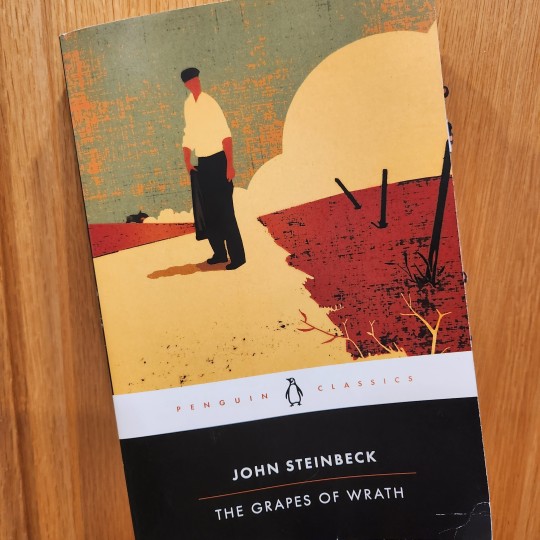
🍇 Jan 20, 2024
book review: The Grapes of Wrath by John Steinbeck
⭐ 4.5/5
I feel like I understand why this book is so revered now. I also think it's incredible relevant today, and I think everyone should read it.
buckle up I have a lot of thoughts
short summary: featuring the Joad family, the story takes places during the Dust Bowl migration of the 1930s. the Joad family is displaced from their home in Oklahoma, they pack up everything they own and drive their family truck to California to look for work, meeting hundreds of others just like them--starving and penniless. work is scarce but they keep trying, and they find community everywhere they settle.
something that I really appreciated about the presentation of the novel is how the main story is interspersed with chapters showing larger pictures of what everyone was going through: car dealership negotiations, trying to pawn off valuables for change, what happens to their farmlands after they leave, experiences of squatter's camps (that Steinbeck visited and collected accounts about while writing this book), shrinking wages and fermenting rage, perfectly good food left to rot because no one can afford it. it paints a wider picture of how desperate people were and how panic spread. it gave another perspective of the Joads by showing the variety of reactions people had to the injustices.
I won't lie, it's a bummer of a book to read, it starts bad and just gets worse, but the whole time, I had hope. the Joads had hope. I was rooting for them the entire time. every time they banded together during a struggle showed their resilience and hope that their luck would turn. and in the end it didn't. misfortune follows them the whole time. right from the start, family members start dying or leaving--up to the very last chapter. they start out with 13 people, and by the end, all but 6 are either gone or dead.
despite the fact that the novel doesn't really offer any solutions to the problems, I think it's still an important read. there seems to be another cycle coming around, where the cost of living is higher than a paying wage. there's a slight comfort in knowing that there will always be a community to find and rally around when everything seems insurmountable and pointless.
"but it's a classic novel! I can't understand those!" yes you can. the prose in this book is probably one of the easiest to understand that I've read in a classic novel. it still has it's dry points, but even if you don't understand every single reference to that time period, you'll still get a lot out of it.
some of my favourite quotes:
-a truck driver after debating whether or not to help a hitchhiker: "He knew he was being trapped, but he couldn't see a way out. And he wanted to be a good guy." (page 7)
-"a spotted brown hat creased like a pork pie" (19)
-"The red sun touched the horizon and spread out like a jellyfish" (45)
-"this was the new hearth, the living center of the family; half passenger car and half truck" (100)
-"This is the beginning--from "I" to "we."" (152)
-""Ain't you got half a buck?" [...] "Yeah, on'y I wisht they was some way to make her 'thout takin' her away from somebody else."" (187)
-"Down in the valley the earth was the lavender-gray of dawn." (289)
I started out thinking Tom was going to be the main character, but I think in the end it was actually Ma. she was the one doing the most to keep the family together and to encourage everyone not to give up. the first and second-last chapters propose that the women were always watching the men, trying to forecast their emotions to determine whether everything would be alright. either way the women would have to be the support on the other side, and that's the responsibility that Ma shoulders throughout the entire novel.
this book has a way of drawing you in and putting a magnifying glass to the discomfort the family experiences. Wikipedia has a quote from Steinbeck about the novel: "Throughout I've tried to make the reader participate in the actuality, what he takes from it will be scaled on his own depth and shallowness." I think it's absolutely true and he accomplished his goal. this is a book that will stay with me for a long time.
#annes room#my bookshelf#books#book reccs#book review#the grapes of wrath#john steinbeck#reading#2024 reading goals
1 note
·
View note
Text
5 Day Southern California Trip 2017
LA to San Diego Road Trip
Feb 19-23 Los Angeles to San Diego Road Trip
Since I had a toddler at the time we opted for airport parking at JFK. When we arrived we parked and took a shuttle to the airport.
Day 1 Los Angeles Feb 19, 2017
We Rented Compact 4 Door Car. We took a Shuttle to counter and waited for them to bring us our car. Mileage was Unlimited. On our way to the hotel we stopped at: (3 hours of drive time)
Venice Beach: Known for its bohemian spirit, Venice is a buzzing beach town with upscale commercial and residential pockets. Free-spirited Venice Boardwalk is the site of funky shops, street performers and colorful murals. There’s also a skate park and Muscle Beach outdoor gym.
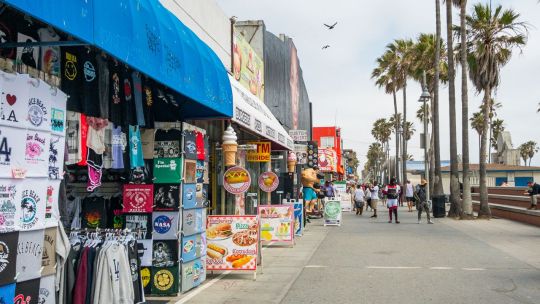
Santa Monica is a coastal city west of downtown Los Angeles. Santa Monica Beach is fringed by Palisades Park, with views over the Pacific Ocean. Santa Monica Pier is home to the Pacific Park amusement park, historic Looff Hippodrome Carousel and Santa Monica Pier Aquarium. Next to the pier is Muscle Beach, an outdoor gym established in the 1930s. In the city center, Bergamot Station houses several art galleries.

Malibu is a beach city in the Santa Monica Mountains region of Los Angeles County, California, situated about 30 miles (48 km) west of Downtown Los Angeles. Malibu pier Iconic circa-1905 pier next to the beach, with shops, restaurants, fishing & people-watching. Top sites: El Matador State Beach A collection of 3 small cliff-foot beaches with blufftop parking popular in the summertime. Point Dume: Tranquil coastal area featuring trails & rocky coves, plus blufftop views of Santa Catalina Island. Leo Carrillo State Par Beach with coastal caves & reefs, plus swimming, surfing, camping, hiking & surf fishing.
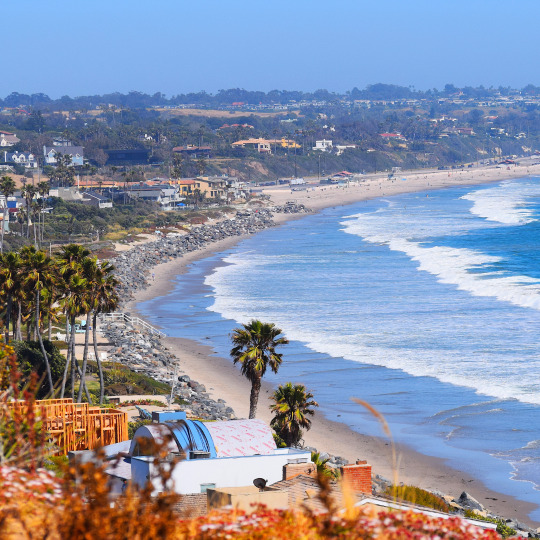
Sunset Boulevard is a boulevard in the central and western part of Los Angeles, California, United States, that stretches from the Pacific Coast Highway in Pacific Palisades east to Figueroa Street in Downtown Los Angeles. The Boulevard is famed as being representative of the classic Hollywood lifestyle and has even been the subject of famous films, not the least of which is its namesake film.

LA Hollywood walk of fame The Walk of Fame is free to visit, and runs fifteen blocks along Hollywood Boulevard (between N La Brea Avenue and N Gower Street). This bustling street is also home to restaurants and shops, vintage movie palaces, fun museums, and celebrity impersonators with uncanny resemblances.

Manhattan Beach is a laid-back South Bay community popular with families and outdoor enthusiasts. The Strand bike path winds along the oceanfront between modern mansions and wide stretches of sand lined with volleyball courts. Low-key Manhattan Beach Pier features a quaint aquarium and views of surfers. There are several parks, and a small downtown area with boutiques, brunch cafes, pubs & creative, upscale eateries.

Hermosa: The city's beach is popular for sunbathing, beach volleyball, surfing, paddleboarding, bars, cycling and running. The city itself extends only about 15 blocks from east to west and 40 blocks from north to south, with Pacific Coast Highway running down the middle.
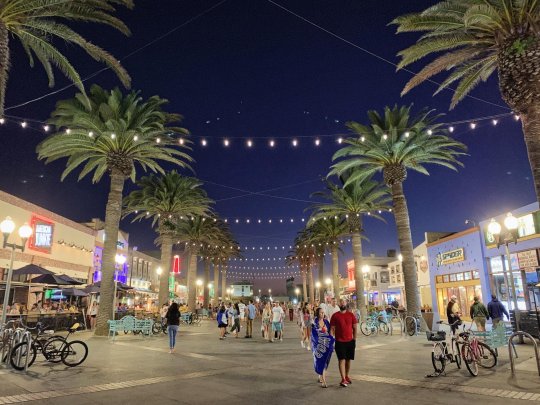
The Queen Mary Tours & Exhibits anehime Long Beach The 1,000+ foot ship set sail for her maiden voyage in 1936, at one point transporting soldiers during World War II before retiring from service in 1967, when it was permanently moored at the port in Long Beach. Since then, it has become a museum, restaurant space and hotel. Explore the Paranormal Hot Spots of the Queen Mary. The tour takes approximately 2 hours to explore various rooms or compartments seldom seen by the general public while famous stories and legends are shared about some of the past passengers aboard the legendary ocean liner.

When drove to our first hotel Wyndham Garden Hotel in Anaheim and checked in, our stay was booked for 2 nights, Feb 19-21.

The hotels is located 12 minutes from Disneyland Park, California Adventure, Downtown Disney, and the Anaheim Convention Center.
Day 2 Feb 20 Disneyland & Huntington Beach
The hotel provided a shuttle to Disney Land. We spent the day there and took a shuttle back to grab our car. Dinner at Huntington Beach, 32 min drive.




Huntington Beach Huntington Beach is a California city southeast of Los Angeles. It's known for surf beaches, such as Huntington City Beach, with its long Huntington Beach Pier.
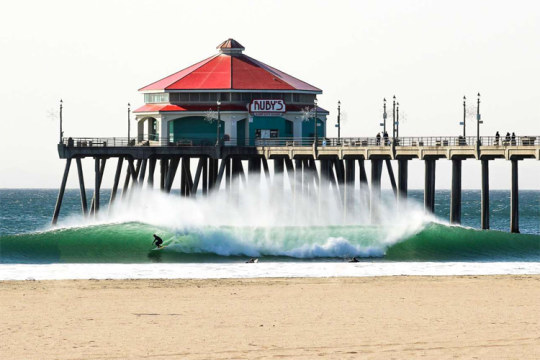

Day 3 Feb 21 Orange County & legoland
On our way to Legoland we took Pacific coast highway stopping at 2 beaches in Orange County. 32 mins from Anaheim to laguna beach. Laguna to Newport 21 mins.
Laguna beach Laguna Beach is famous for its beautiful BEACHES, beautiful people, and bohemian chic, but in addition to an array of water sports, it has also built a reputation for having an excellent network of TRAILS that afford numerous hiking, biking, and running options in 20,000+ acres of protected land. No visit to Laguna Beach is complete without exploring its extensive network of sea caves, sea arches, and TIDE POOLS, many of which are only accessible at low tide. Download the official VISIT LAGUNA BEACH APP, which has tide tables and information specific to each beach and cave. We didn’t have an opportunity to do this but when we come back we will!

Newport Beach, a coastal city in southern California, is known for its large, boat-filled harbor. Balboa Peninsula has 2 piers, Newport Beach Pier and Balboa Pier, plus the Balboa Fun Zone, an old-school amusement park with a Ferris wheel and ocean views. Local beaches include the Wedge, known for its big waves, and Corona del Mar State Beach. The Orange County Museum of Art exhibits modern and contemporary works.
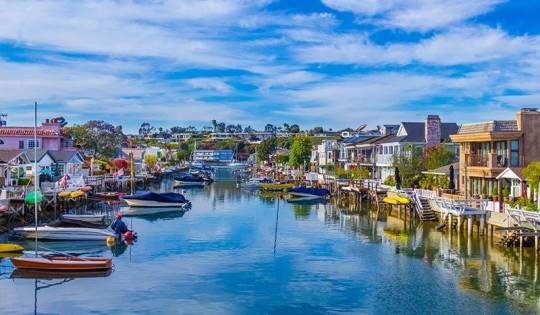
55 min drive from Disneyland to Legoland, carlsbud
Legoland: Conquer dragons, battle pirates and discover ancient treasures at the Resort, also home to LEGOLAND Water Park, SEA LIFE® Aquarium; enjoy Surfers’ Cove – a water park expansion featuring racer-water slides.
Park top: If you go at 9am before the park opens at 10am you can head to the hotel to play in the main lobby. You can even stop by at the hotel and grab lunch during the day or after your have ended your day at the park.
At 9:45am head to the entrance, they put on a show and allows you to enter earlier. When you are in the park be sure to counter clock wise so you can get a head start on all the fun lines to avoid lines and hit the mini lego city on your way out.




35 min drive from Legoland to Ramada Hotel. The hotel located just a mile away from Sea World. Old Town San Diego 2 miles and numerous beaches within a mile. It is a great place to explore Southern California's most exciting playgrounds!

Day 4 San Diego & San Diego Zoo Feb 22
13 min drive to the San Diego Zoo: pioneered cageless exhibits and offers travelers a fun and informative experience. Featuring over 4000 animals, the park gives you a peek into the wildlife of several ecosystems, from deserts to rainforests. Ride the tour bus, which crosses three quarters of the zoo’s area, and learn more about the animals from the guide as you view them in their natural habitats. You can also hop on the Skyfari gondola lift to see the entire park from above.


16 min drive San Diego Zoo to Pacific beach.
Take in the mesmerizing coastal views as you stroll down Crystal Pier. Watch the surfers in action, you might be able to spot frolicking dolphins and whales during the migration season. Pacific Beach is renowned as San Diego’s party capital, and the boardwalk is lined with bars, cafes, and restaurants.
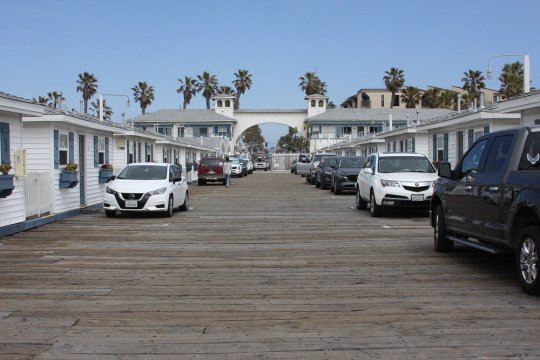

Day 5 San Diego to LA Feb 23
We checked out of our San Diego Hotel, stopped at 2 spots and headed back to LA to Drop-off our rent a car. We then took our flight back home.
Sunset Cliffs Natural Park – Point Loma Dedicated in 1983, Sunset Cliffs Natural Park is a 68-acre City of San Diego regional park which extends 1½ miles along the Point Loma peninsula's western shoreline. This unique coastal environment features expansive ocean views, dramatic cliff formations and caves, a fascinating intertidal area, and native coastal sage scrub habitat, which provides connectivity to the adjacent Point Loma Ecological Reserve.

Little Italy At 48-square blocks, San Diego's Little Italy is the largest in the U.S. Little Italy is a neighborhood in Downtown San Diego, California, that was originally a predominantly Italian and Portuguese fishing neighborhood.

2 -1/2 hour drive to LAX airport.
1 note
·
View note
Photo

The Gazebo – Oil on canvas – 24 x 36 inches. This painting has never appeared in a gallery nor in any other public exhibition, and this is the only time it has been posted on social media. So here’s a question: Could this structure be a fantasy of the artist, or might it actually exist somewhere? If it’s “real,” that is, if it has been painted on the spot somewhere, where might that somewhere be? In Italy? Copenhagen, perhaps? Connecticut? When I first saw the gazebo many years ago, I had been informed that it was part of the history of what had been the largest thoroughbred horse ranch in California. To me it appeared in my imagination as a dazzling relic of the 1930’s. I saw summer garden parties with beautiful women in flowing dresses, flowers everywhere, an orchestra playing Gershwin music, boats on the lake, champagne and tuxedoes, straw hats, and the shade of Jay Gatsby, hovering above the festivities. The structure’s arches and roof suggested Europe, and yet here it existed in the foothills of the Sierra Nevada mountains. If there is a ghost present, it would be that of Errol MacBoyle, the wealthy gentleman who built the gazebo and the accompanying lake. The gazebo was not built for parties, however, but as the control center for the electrical connections, pipes and valves that regulated the water that still flows into a gigantic fountain at the opposite end of the lake. You can make your own choice between the literal gazebo and the imaginal one. Or, why choose? Might it possible to hold both visions in mind at the same time? And perhaps include two ghosts as well? Or in the case of Jay Gatsby, the ghost of a ghost? #realistart #fineart #visualpoetry #modernart #artofvisuals #arte #kunst #artoninstagram #artzone #saatchiartist #watercolorart #pintura #contemporarypainting #visionaryart #dailyartworks More images on my website: johnmichaelkeating.com https://instagr.am/p/CpLZinILbUD/
0 notes
Text
A Utopia Spelled Z, Z, Y, Z, X
The enduring legacy of Zzyzx Mineral Springs and Health Resort is a testimony to the strange vision of a self-proclaimed evangelist and health guru who moved out to the end of nowhere in the Mojave Desert and proceeded to make a utopia in his image-part high-minded and religion and part hucksterism. Ingenuity and a lot of fast talk burnished up this spot on the shore of a dry salt flat, and for a while made the post office in nearby Baker one of the busiest in southern California.
Millions of travelers on Interstate 15 have passed the exit for Zzyzx a few miles west of the Death Valley highway, possibly noting the unusual name, but most were too busy getting to one Sin City or another to bother with it. Four and a half miles south over a gravel road lie the ruins of the dream of one of the desert’s most legendary characters.
Curtis Howe Springer had made a name for himself as a radio evangelist in the 1930s, beginning at radio station KDKA in Pittsburgh. Like many of his ilk, he eventually pointed his crusade toward the West Coast, where spiritual fads and miracle cures were starting to find a willing and gullible audience. Like his predecessor, Sister Aimee Semple McPherson, Springer down new roots in fertile soil and set about expending his vision.
Springer was no amateur when it came to managing vacations retreats. He had founded and/or managed six resorts in other states before he and his fiancée, Helen, with their (gasp) daughter in tow arrived in what he called “a mosquito swamp” in the eastern Mojave Desert in 1944. He filed a mining claim on twelve thousand acres and began building his base suite in Los Angeles, where he made tapes for his national broadcasts and conducted other business. He would then board his crusading bus and round up derelicts on skid row, offering them meals and shelter in exchange for construction work, with his new desert outfit. Some of them left immediately when the no-alcohol policy was revealed, but many stayed, some for years and a few for the rest of their lives.
When Springer was done, the new town at the foot of Soda Mountain boasted a chapel, a cross-shaped pool with soaking tubs, an artificial lake, a two-story sixty-room hotel, and even an airstrip, which he named Zyport. With some assuredly highfalutin wrangling, Springer managed to buy an old seagoing freighter and dismantled it for parts to add to his growing compound. A launch or lifeboat from the project still sits at the site, high and dry and rusting, but so far preserved in the desiccating desert sun. The main drag was dubbed the Boulevard of Dreams.
Springer then went into high gear, promoting his new retreat on his international radio sermons. People calling his Los Angeles heard a recorded voice beckoning them with, “Hello, this is your old friend Curtis Springer coming to you from Zzyzx Mineral Springs out in the heart of the great Mojave Desert.” He touted the place as the last word in health and vitality. Free bus rides left every Wednesday from the Olympic Hotel on Figueroa Street in L.A., ferrying the hopeful out in droves.
A day at Zzyzx included a hearty breakfast of goat milk and Springer’s popular Antedeluvian Tea, said to prolong life. Though he tried to be relatively self-sufficient, the only livestock that could be sustained on the alkali flats except for goats were rabbits, which formed the bulk of the meat served. All of the veggies were trucked in a couple of times each week. Guests stayed for a reasonable sum, but were heavily encouraged to make fee-will “donations” to the Springer Foundation. They were subjected to rousing sermons delivered twice daily by Springer over a booming PA system.
The evangelist’s miraculous cures were big items at the retreat, including the aforementioned tea and a $25 do-it-yourself hemorrhoid cure kit. One of the most successful remedies was Mo-Hair-a baldness cure. The folksy Springer instructed the soon-to-be-hairy to rub the concoction vigorously into the scalp, then to double over and hold their breath for as long as possible. The resulting flush to the cheeks and scalp was proof, he said, of the virtues of his discovery. One man who took Springer to court over his continued baldness after extensive use of Mo-Hair watched in astonishment as the preacher reached into his pocket and peeled off the $2,500 fine “as casually as if he was taking care of a $2 traffic ticket.”
Well after Zzyzx was established, Springer began to offer lots for sale on the adjacent property-which he had neglected to buy-so that the well-to-do faithful might take twenty-four-hour advantage of his healing waters and lifestyle. This act, along with occasional complaints to the authorities about this “cures,” eventually focused government attention on his operation. In 1974, the Bureau of Land Management (BLM) informed Springer that he could not sell land that he didn’t own, and he was evicted from the property, along with a few hundred followers. Curtis Howe Springer died in Las Vegas in 1986 at the age of ninety, after he had served several jail terms for sundry felonies.
Today California State University’s Desert Studies Center occupies the site. Zzyzx was finally entered as an official geographic name in 1984, proving that Curtis Springer did indeed have the last word. To get to the place he dreamed up, take the Zzyzx Road exit-eight miles west of Baker on Interstate 15, then south on a paved road, which soon ends at a graded gravel road.
0 notes
Text
Things to Do Near Our San Francisco Studios
San Francisco offers several attractions. There is a lot to see and do, from the arts to popular social areas, fascinating neighbour hoods, and magical locations. Because they are so far away, you may need to take public transportation to get there. Explore the city's distinct culture and explore some of America's most iconic sites. In addition to ancient jails, you will see galleries, buildings, and museums. Furthermore, because our studio apartments for rent san francisco are strategically located, you will be able to explore the sites without having to go too far. Even if you were a bit outside of the area that you could easily walk to, the neighbouring public transit will take you there quickly.
Nearby to our studio apartments, there are several fantastic locations to explore, including:
Golden Gate Bridge - No trip to San Francisco is complete without a photo with the Golden Gate Bridge in the background. One of the most popular tourist destinations in the world is undoubtedly San Francisco's Golden Gate Bridge. A walk across the bridge is strongly suggested if you have the time.
Alcatraz Island - This is where some of the most feared criminals in the United States were formerly imprisoned. This old federal penitentiary was closed in 1970 and is now a national monument. Remember to reserve a ferry to the island.
Lombard Street - This is one of the world's windiest zig-zagged streets, and it's definitely worth a visit since it's lined with gorgeous vegetation, and it's even better if you take a cab downward. If you're on the cable car, make your way down to Lombard Street to get a better look.
Coit Tower - Built in the 1930s, Coit Tower sits atop Telegraph Hill. It is an excellent spot for a panoramic 360-degree view of San Francisco.
Palace of Fine Arts - one of San Francisco's most famous landmarks and perhaps one of its most stunning historical structures is the Palace of Fine Arts, a Greco-Roman-style dome with an adjacent lagoon. You may spend a whole day visiting the castle and having a picnic here.
Best Restaurants in Our Neighbourhood
Great meals can be found all across San Francisco. In reality, it is one of the cities in the United States that may easily outperform others in terms of food. The city's DNA contains innovation, which is reflected in its cuisines. Certain neighbourhoods in the city are well-known for the cuisine culture that they have established through time. For example, Chinatown is great for rice and noodles, Japantown is great for Sushi, Nob Hill is great for Italian dishes, and Fishermen's Wharf is great for seafood.
Mourad - Michelin-starred chef Mourad Lahlou's restaurant is known for its traditional Moroccan cuisine, which combines the rich and bright tastes of Morocco with the neo-innovative spirit of Northern California.
One65 is a café, bistro, fine-dining restaurant, bar and lounge, patisserie, and private dining centre all rolled into one.
Californios - A Michelin-starred restaurant, Californios is a fusion of Mexico and America where you may sample a 16-course seasonal and fresh cuisine.
Fiorella - This is where the SF gourmet scene congregates. Fiorella, famous for its wood-fired oven pizza, serves delectable Italian fare and is a must-see.
Transportation Near Our SFO Studio Apartments
Walking is the greatest way to see San Francisco. Nonetheless, considering the distances, you always have a wealth of options for getting about. Muni, for example, is a public transportation system in San Francisco that operates buses, trains, cable cars, and vintage streetcars. Wherever you're attempting to go, the interconnected city will bring you there quickly. Select a method of transportation, and you will soon be at the city's heart.
Note : The average rent in San Francisco 1 bedroom is currently $3,000. This is a 7% increase compared to the previous year.
0 notes
Text
One Day Guide to Spend in Glendale, California
If you're looking for a day trip that's near Los Angeles, but without all the hustle and bustle, consider spending a day in Glendale, CA. This city boasts museums, outdoor spaces and more—all within walking distance from one another. Here are some of our favorite spots to visit on your next trip!
Glendale Galleria
Glendale Galleria is located at 100 West Broadway, Glendale, CA 91210.
The mall is open daily from 10 a.m. to 9 p.m., except on Thanksgiving and Christmas when they are closed.
The cost of admission per person is $2 with your First Fridays Pass or $5 without one. If you're unsure whether you have a pass or not, ask at the gate!

There are many activities to enjoy at the Galleria: visit Santa's Workshop (free all month), see an ice sculptor in action ($5 per person), ride in a horse-drawn carriage ($15 for five minutes), shop for gifts at Macy's and other stores, dine with friends at one of several restaurants that line the walkways—and more! Here's a complete list of things you can do here!
Museum of Neon Art
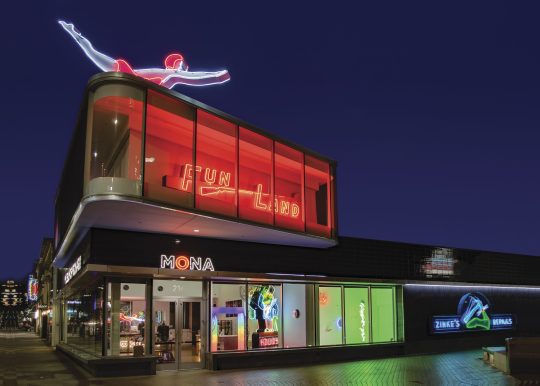
Museum of Neon Art is small but mighty, with a collection of neon art from artists around the world. It’s open daily, and admission is free. Kids and adults alike will enjoy this place, with its classic signs and colorful displays that are sure to inspire plenty of photos. Located right in downtown Glendale, it’s a great stop on your way out of or into town!
Moonlight Rollerway, Inc

The Moonlight Rollerway, Inc is a roller skating rink located in the Glendale Galleria. This rink is open year-round and it's open until 10pm on weekdays and 11pm on weekends. Prices range from $7-$13 per person.
The Moonlight Rollerway, Inc offers great deals for special events like their Thursday Night Specials! Get two hours of skate time for only $10! It's perfect for birthday parties or just a night out with friends!
Autry Museum of the American West

The Autry Museum of the American West is a museum in Los Angeles, California, dedicated to the celebration of the diverse people and cultures of the American West. It is located in Griffith Park, near the Los Angeles Zoo.
The museum was founded by Gene Autry. He originally wanted to create it as an arena for all things Western: rodeo events and concerts, horse shows and other competitions. But after he saw some artifacts from his own collection being auctioned off at Sotheby's, he decided that instead of selling them off for money he would create a permanent home where people could enjoy them for free!
Fremont Park
Fremont Park is a park located in the city of Glendale, California. It is the largest park in Glendale, covering an area of approximately 19 acres (77,000 m2). The park's boundaries are Lake Street to the west, Brand Boulevard to the south and east, and Beverly Boulevard to the north.
The park was created during the 1930s depression by James W. Mackey and his son-in-law George A. Hormel (of Hormel Foods) as part of their long-term vision for a large public space that would serve as central plaza for all residents of Glendale.[1] The land was purchased from several landowners including Caroline Atherton Smith (through her estate), who also owned much of modern day downtown Glendale.
Glendale is a great city to spend the day exploring. You can get around simply by walking, or you can go for a ride on the Red Line Metro bus. There are so many things to do in Glendale that it’s impossible to list them all here! The best way would be just go and have fun out there!"
Davtyan Law Firm, Inc. is a Los Angeles employment lawyer that provides legal services to clients throughout California. Our firm specializes in litigating cases involving employee rights, discrimination, harassment and retaliation. The firm also handles cases involving wage and hour violations, wrongful termination, and other workplace issues.

We are dedicated to helping employees who have been wronged by their employers or former employers recover the compensation they deserve. We offer free consultations so you can learn more about your legal options before deciding whether you need to hire an attorney.
Davtyan Law Firm, Inc.
880 E Broadway, Glendale, CA 91205
18552053681
https://www.davtyanlaw.com/
https://www.google.com/maps?cid=1030395778475401248
youtube
#los angeles employment lawyer#los angeles wrongful termination attorney#Employment lawyer#employment attorney#Employment lawyer California#employment attorney glendale ca
0 notes
Text
Events 4.2 (before 1980)
1513 – Having spotted land on March 27, Spanish explorer Juan Ponce de León comes ashore on what is now the U.S. state of Florida, landing somewhere between the modern city of St. Augustine and the mouth of the St. Johns River.
1755 – Commodore William James captures the Maratha fortress of Suvarnadurg on the west coast of India.
1792 – The Coinage Act is passed by Congress, establishing the United States Mint.
1800 – Ludwig van Beethoven leads the premiere of his First Symphony in Vienna.
1801 – French Revolutionary Wars: In the Battle of Copenhagen a British Royal Navy squadron defeats a hastily assembled, smaller, mostly-volunteer Dano-Norwegian Navy at high cost, forcing Denmark out of the Second League of Armed Neutrality.
1863 – American Civil War: The largest in a series of Southern bread riots occurs in Richmond, Virginia.
1865 – American Civil War: Defeat at the Third Battle of Petersburg forces the Army of Northern Virginia and the Confederate government to abandon Richmond, Virginia.
1885 – Canadian Cree warriors attack the village of Frog Lake, killing nine.
1902 – Dmitry Sipyagin, Minister of Interior of the Russian Empire, is assassinated in the Mariinsky Palace, Saint Petersburg.
1902 – "Electric Theatre", the first full-time movie theater in the United States, opens in Los Angeles.
1911 – The Australian Bureau of Statistics conducts the country's first national census.
1912 – The ill-fated RMS Titanic begins sea trials.
1917 – American entry into World War I: President Wilson asks the U.S. Congress for a declaration of war on Germany.
1921 – The Autonomous Government of Khorasan, a military government encompassing the modern state of Iran, is established.
1930 – After the mysterious death of Empress Zewditu, Haile Selassie is proclaimed emperor of Ethiopia.
1954 – A 19-month-old infant is swept up in the ocean tides at Hermosa Beach, California. Local photographer John L. Gaunt photographs the incident; 1955 Pulitzer winner "Tragedy by the Sea".
1956 – As the World Turns and The Edge of Night premiere on CBS. The two soaps become the first daytime dramas to debut in the 30-minute format.
1964 – The Soviet Union launches Zond 1.
1969 – LOT Polish Airlines Flight 165 crashes into the Polica mountain near Zawoja, Poland, killing 53.
1972 – Actor Charlie Chaplin returns to the United States for the first time since being labeled a communist during the Red Scare in the early 1950s.
1973 – Launch of the LexisNexis computerized legal research service.
1975 – Vietnam War: Thousands of civilian refugees flee from Quảng Ngãi Province in front of advancing North Vietnamese troops.
1976 – Prince Norodom Sihanouk resigns as leader of Cambodia and is placed under house arrest.
1979 – A Soviet bio-warfare laboratory at Sverdlovsk accidentally releases airborne anthrax spores, killing 66 plus an unknown amount of livestock.
0 notes